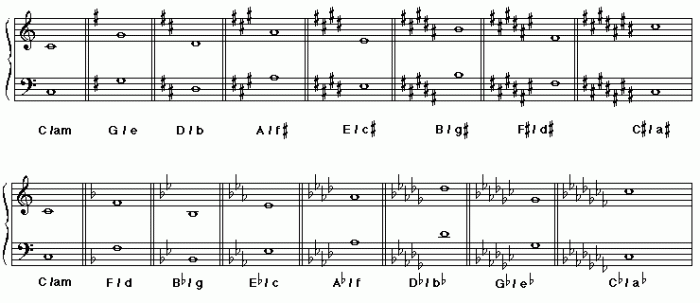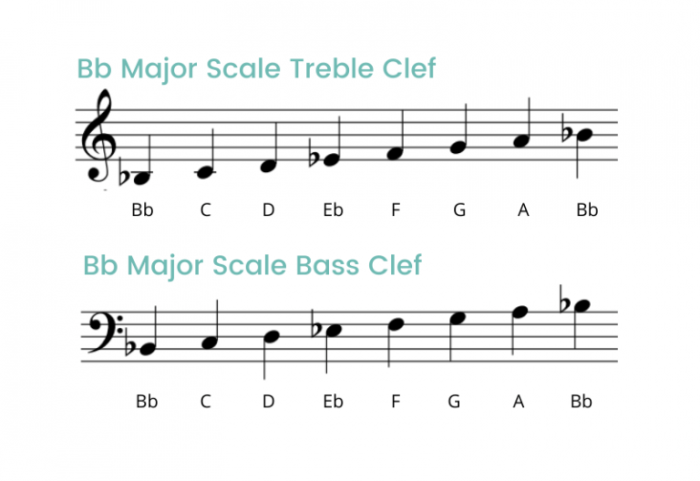A flat major triad bass clef – Step into the enchanting world of music theory as we unravel the mysteries of the A flat major triad in bass clef. This harmonious entity, with its distinct intervals and versatile harmonic functions, is a cornerstone of musical compositions, waiting to be explored.
From its intricate structure to its captivating sound, the A flat major triad holds a special place in the musical landscape, inviting us to delve into its depths and uncover its secrets.
Music Theory

In music theory, a triad is a chord consisting of three notes. Major triads are a fundamental type of chord that provides a stable and consonant sound. They are constructed by stacking three notes in thirds.
Structure of a Major Triad
A major triad consists of a root note, a major third above the root, and a perfect fifth above the root.
Playing a flat major triad in the bass clef is a breeze. The root note is on the second line, the third is on the fourth line, and the fifth is on the first space. It’s like a walk in the park! But if you’re feeling a bit adventurous, why not explore a gas that occupies 900.0 ml ? It’s a whole new world of musical possibilities, just like the possibilities that lie beyond the realm of a flat major triad.
A Flat Major Triad in Bass Clef
An A flat major triad in bass clef consists of the following notes:
- A flat (root)
- C flat (major third)
- E flat (perfect fifth)
Intervals in an A Flat Major Triad
The intervals between the notes in an A flat major triad are:
- Root to major third: Major third (4 semitones)
- Major third to perfect fifth: Minor third (3 semitones)
Keyboard Fingering

Playing the A flat major triad in the bass clef on the piano requires the proper fingering technique to ensure smooth transitions and accurate sound production.
Fingerings for A Flat Major Triad
The following table shows the recommended fingering for each note in the A flat major triad:
| Note | Finger |
|---|---|
| A flat (root) | 1 |
| C flat (third) | 2 |
| E flat (fifth) | 4 |
To play the triad, start by placing your thumb (finger 1) on the A flat (root note). Then, place your index finger (finger 2) on the C flat (third) and your ring finger (finger 4) on the E flat (fifth).
For smooth transitions between the notes, it is important to keep your fingers close to the keys and to avoid lifting them too high. When moving from the root to the third, slide your thumb down to the C flat while keeping your other fingers in place.
Similarly, when moving from the third to the fifth, slide your index finger down to the E flat while keeping your thumb and ring finger in place.
Harmonic Function
The A flat major triad serves multiple harmonic functions in various musical contexts, acting as a foundation for chords and chord progressions.
In the key of A flat major, the A flat major triad functions as the tonic chord, providing a sense of stability and resolution. It represents the tonal center and establishes the key of the piece.
Subdominant Function
When used in the key of D flat major, the A flat major triad acts as the subdominant chord. It creates a sense of anticipation and leads towards the dominant chord, contributing to harmonic movement.
Dominant Function, A flat major triad bass clef
In the key of E flat major, the A flat major triad assumes the role of the dominant chord. It generates a strong sense of resolution and leads back to the tonic chord, creating a satisfying cadence.
These examples demonstrate the versatility of the A flat major triad in different harmonic contexts, contributing to the overall structure and progression of musical pieces.
Compositional Techniques

Incorporating A flat major triads into musical compositions offers a versatile tool for creating musical tension and release. The distinctive sound of this triad can evoke a range of emotions and enhance the harmonic structure of a piece.
Tension and Release
The A flat major triad can create tension when placed against contrasting harmonies. For instance, transitioning from a C major chord to an A flat major chord introduces a sense of dissonance and instability. Resolving back to the C major chord provides a satisfying release, creating a sense of harmonic progression and resolution.
Examples in Classical Music
Many classical composers have effectively utilized A flat major triads in their works. In Beethoven’s Symphony No. 5, the opening motif features an A flat major triad, establishing a sense of grandeur and drama.
Historical Context: A Flat Major Triad Bass Clef

The A flat major triad, with its warm and resonant sound, has been an integral part of Western music for centuries. Its evolution traces a path through diverse musical eras, from early polyphony to the present day.In the Middle Ages, the A flat major triad was rarely used as an independent entity.
Instead, it served primarily as a passing chord or as part of larger harmonic progressions. However, as music became more complex during the Renaissance, the A flat major triad began to emerge as a самостоятельное (independent) chord.During the Baroque period, the A flat major triad became increasingly common in both sacred and secular music.
Composers such as Johann Sebastian Bach and George Frideric Handel used it to create a sense of grandeur and majesty in their works. In the Classical period, the A flat major triad continued to be used extensively, particularly in the music of Wolfgang Amadeus Mozart and Ludwig van Beethoven.In
the Romantic period, the A flat major triad became associated with a wide range of emotions, from joy and triumph to melancholy and nostalgia. Composers such as Franz Schubert, Robert Schumann, and Frédéric Chopin used it to evoke a sense of longing and longing.In
the 20th century, the A flat major triad continued to be used in a variety of musical genres, including jazz, popular music, and film scores. Its versatility and expressive power have made it a timeless musical resource.
Famous Pieces Featuring the A Flat Major Triad
* “Clair de Lune” by Claude Debussy
- “Prelude in C Major, BWV 846” by Johann Sebastian Bach
- “Piano Sonata No. 11 in A Major, Op. 22” by Ludwig van Beethoven
- “Symphony No. 5 in C Minor, Op. 67” by Ludwig van Beethoven
- “Nocturne No. 2 in E Flat Major, Op. 9, No. 2” by Frédéric Chopin
Helpful Answers
What is the structure of an A flat major triad?
An A flat major triad consists of three notes: A flat, C, and E flat, with intervals of a major third between A flat and C, and a minor third between C and E flat.
How do I play an A flat major triad in bass clef on the piano?
Use your left-hand thumb on A flat, index finger on C, and middle finger on E flat.
What are some compositional techniques that utilize A flat major triads?
A flat major triads can create tension and release, add color and depth to harmonies, and serve as a foundation for chord progressions.